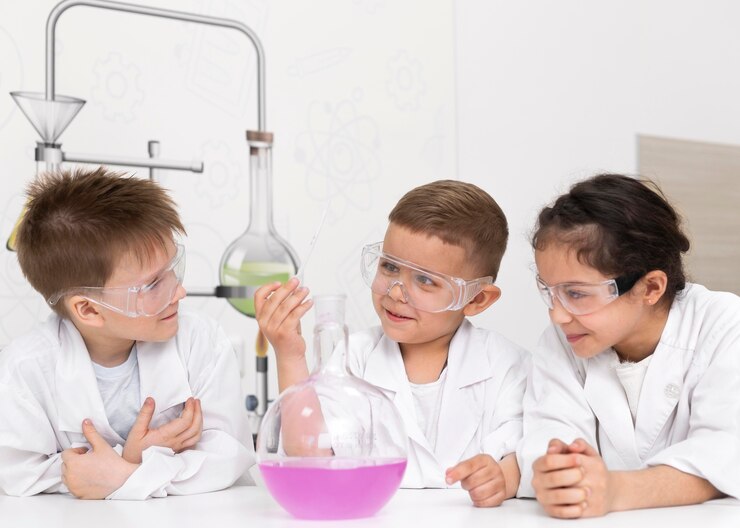Science often feels like a puzzle — exciting but tricky. In Singapore, students step into formal science lessons from Secondary 1. This early stage sets the tone for how they handle complex topics in the years ahead. Many turn to Sec 1 science tuition for added support. But what exactly do these sessions cover? Let’s explore 10 must-know topics students often tackle in tuition classes.
Why Sec 1 Science Matters?
Secondary 1 science introduces many new ideas. It blends theory with application. Students don’t just read about science — they experiment, observe, and explain. This forms the foundation needed for more complex concepts in Sec 2 science tuition later.
1. Understanding the Scientific Method
Every science lesson builds on the same process: ask, observe, test, conclude. Tuition classes stress this structure. Students learn how to:
- Identify problems
- Make hypotheses
- Carry out fair tests
- Draw clear conclusions
These steps train the mind to think logically and ask questions with purpose. By repeating these steps often, students learn how science works, not just what it says.
2. Exploring Laboratory Safety and Equipment
Before touching a test tube, students must understand how to stay safe. In tuition, they often revise:
- Common lab tools and their uses
- Proper handling of hot or sharp items
- Safety symbols and what they mean
Clear instructions prevent injuries. Tutors explain why goggles matter or how Bunsen burners function. Students also practise naming equipment, which helps during tests.
Knowing lab rules avoids accidents and encourages responsibility.
3. States of Matter
Solid, liquid, and gas — students learn what makes each state different. They explore:
- Particle arrangement in each state
- How does matter change when heated or cooled?
- Real-life examples, like melting chocolate or boiling water
In tuition classes, these topics go beyond the textbook. Tutors use models, drawings, and real-life comparisons. They ask why ice floats or how sweat cools the body.
Understanding states of matter also sets the stage for energy, pressure, and temperature concepts later in Sec 2 science tuition.
4. Elements, Compounds, and Mixtures
Here, students begin to see what matter is made of. This topic builds chemistry skills. They discover:
- Atoms as building blocks
- Simple formulas like H₂O or CO₂
- Differences between mixtures and pure substances
Tuition offers repeated exposure to these terms. Students break down chemical symbols and compare properties of mixtures and compounds. With practice, they learn to write simple equations and classify materials correctly.
This knowledge forms a bridge to deeper chemical topics in future science classes.
5. Cells and Their Functions
Microscopes open new worlds. In this section, students learn:
- Plant vs animal cell parts
- Functions of organelles like the nucleus or chloroplasts
- Cell diagrams and how to label them
Tuition sessions often include practice quizzes or flashcards to help memorise these parts. Tutors might use games or puzzles to reinforce cell structures.
Understanding cells helps students later when they learn about tissues, organs, and body systems.
6. The Human Digestive System
Food powers the body, but how does it break down? This topic explores:
- Organs in the digestive system
- The role of enzymes
- The journey from mouth to stomach to intestines
Students study food types and their nutrient value. Tuition often includes visual aids, from charts to animated videos, to explain processes like peristalsis.
Understanding digestion is key for later biology chapters like respiration and metabolism.
Quick Comparison of Key Organ Functions in Digestion
Before going further, here’s a simple table showing the roles of major digestive organs.
| Organ | Function |
| Mouth | Chews food and adds saliva |
| Stomach | Mixes food with acid and enzymes |
| Small Intestine | Absorbs nutrients into the bloodstream |
| Large Intestine | Removes water and forms waste |
Understanding this helps students answer questions about both structure and function in tests.
7. Photosynthesis
This process helps plants survive and produce oxygen. Students explore:
- The equation for photosynthesis
- Why light and chlorophyll matter
- How photosynthesis links to energy flow in nature
Tuition teachers often use flowcharts to break down each step and explain clearly. They may guide students to set up plant experiments or model leaves with paper cutouts.
This topic ties closely with ecosystems and energy transfers. A firm grasp of photosynthesis supports future biology units.
8. Physical vs Chemical Changes
Not all changes look the same. Here, students compare:
- Physical changes (like melting) that can reverse
- Chemical changes (like rusting) that create something new
Tuition often includes experiments or video examples, such as burning paper or dissolving salt.
Learning how to tell these changes apart teaches observation and helps students avoid mistakes during practical exams.
9. Heat and Its Effects
Heat influences matter in many ways. This topic covers:
- Conduction, convection, and radiation
- Expansion and contraction in solids, liquids, and gases
- How to use thermometers and interpret readings?
Students learn why windows crack or how hot air balloons rise. Tuition helps them apply theory to familiar experiences.
These lessons prepare students for more complex energy transfer topics in Sec 2 science tuition.
10. Interactions Within Ecosystems
Lastly, students look beyond the lab and into nature. This section explores:
- Food chains and food webs
- Producers, consumers, and decomposers
- Balance and changes in ecosystems
Tuition classes guide students through drawing webs and comparing ecosystems like forests or oceans. These skills make the chapter feel more alive and relevant.
Connecting Sec 1 and Sec 2 Topics
Many topics in Sec 1 science tuition prepare students for the next level. For example, knowing how particles behave helps with understanding chemical equations later. Understanding cells sets the stage for genetics.
How are Sec 1 Topics linked to Sec 2 Concepts?
Here’s a look at how early lessons support future learning.
| Sec 1 Topic | Leads to This in Sec 2 |
| Elements and compounds | Chemical bonding, equations |
| Human digestive system | Human respiratory and circulatory systems |
| Heat and its effects | Energy conversions, physics laws |
| Cells | Cell division, genetics |
| Photosynthesis | Energy in ecosystems, biology |
This shows why mastering Sec 1 topics is vital before moving to Sec 2 science tuition.
What Students Gain Beyond Knowledge?
Besides facts and definitions, students learn skills that help them grow:
- Observation: They learn to notice small details.
- Communication: They practise writing clear answers.
- Reasoning: They explain why things happen, not just what happens.
- Discipline: They build habits of consistency and revision.
These skills help not only in science but in all school subjects. Tuition gives space to explore mistakes without fear. That safe space encourages effort, even when concepts feel tough.
Tips to Make the Most of Tuition
To do well, students must stay active during lessons. Here’s how:
- Ask questions when unsure
- Review notes after each class
- Practice drawing diagrams
- Use colour to highlight key points
- Group similar ideas together to improve memory
Parents can support by showing interest and asking about what was covered in class. Even a quick “What did you learn today?” builds connection and motivation.
Final Thoughts
Science teaches more than just how the world works. It builds the ability to think clearly, solve problems, and stay curious. Sec 1 science tuition gives students a strong start, helping them face challenges with confidence. These 10 topics, when taught well, stay with them far beyond the exam hall.
Later, in Sec 2 science tuition, students revisit many of these themes at a deeper level. A solid foundation now means smoother learning later. When students understand the basics and know how to apply them, science becomes not just easier — it becomes exciting.


